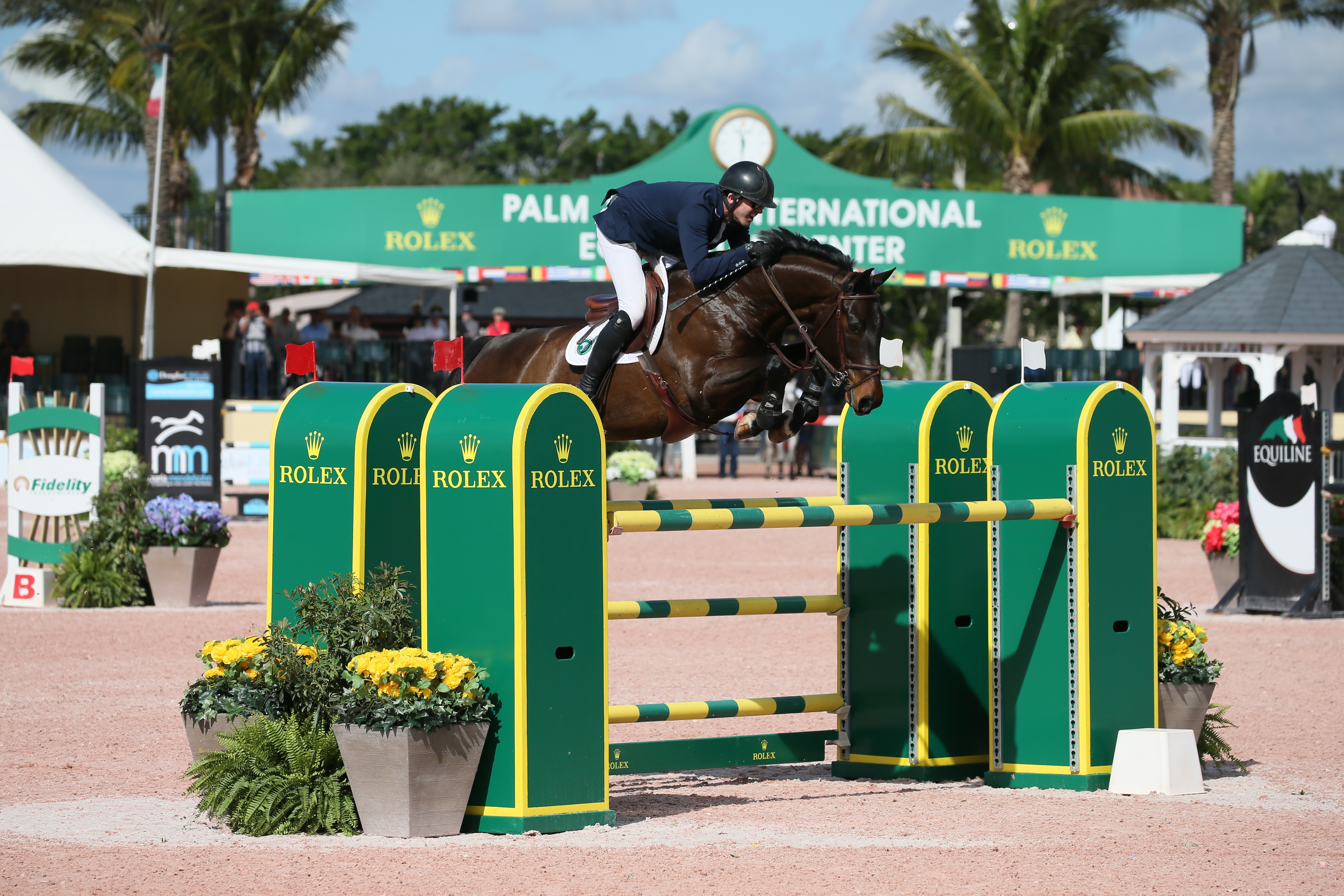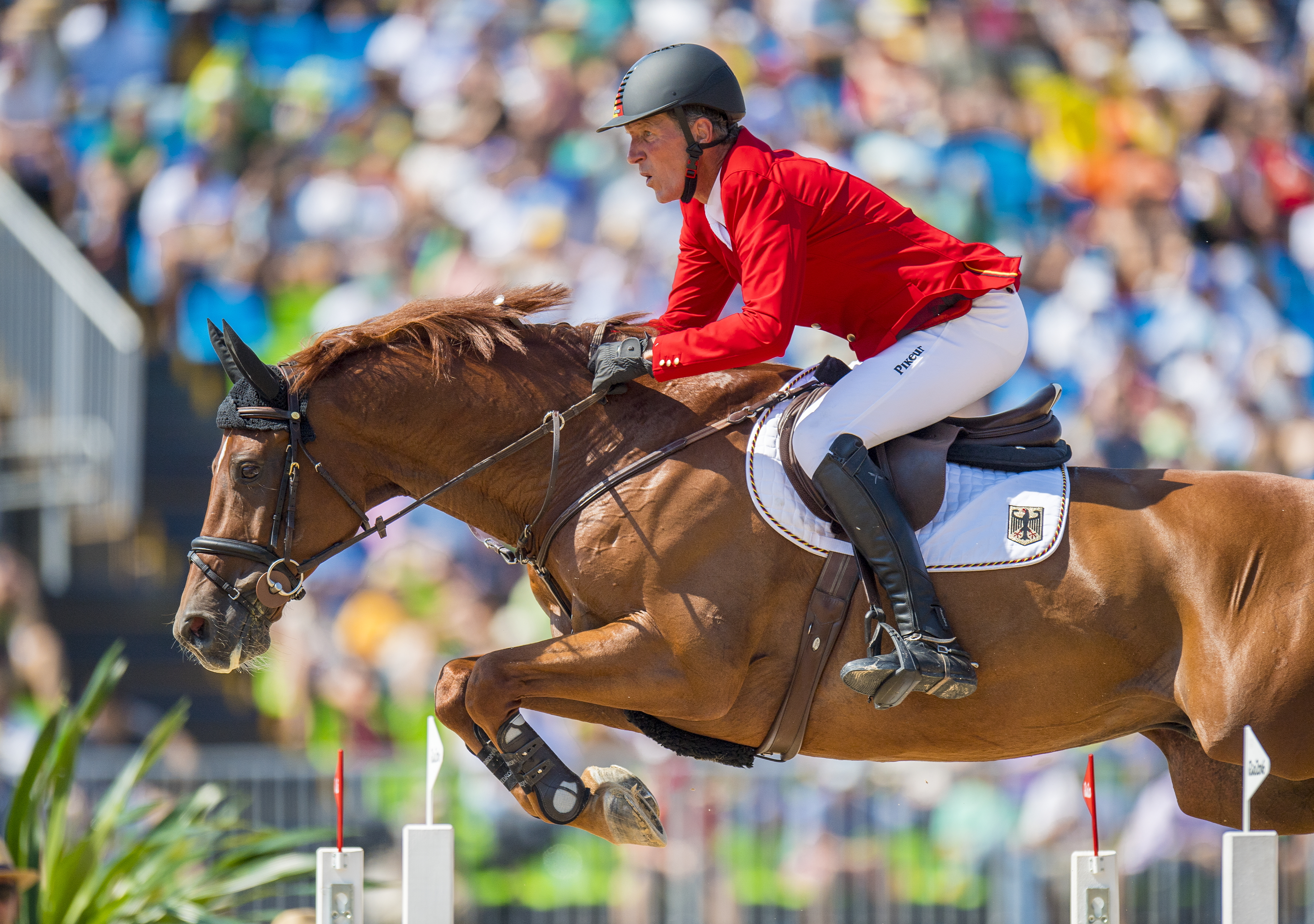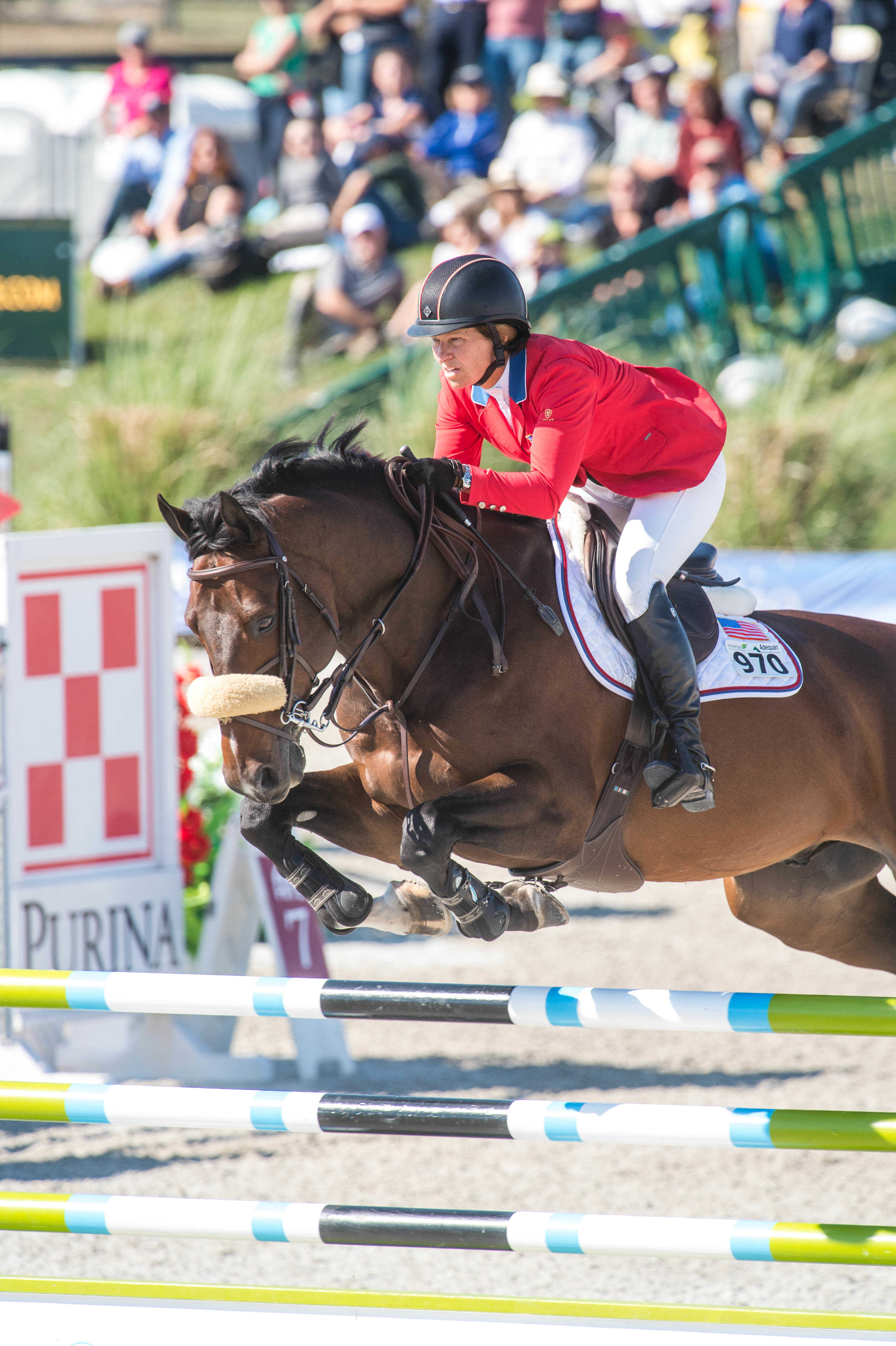
Whatever discipline you ride in, one of the best ways to improve your skills is to study successful riders at the top levels and try to emulate them. You can learn so much by observing how they use their aids, what they do before, during and after the jump and how they ride in between the jumps. With online sites like YouTube overflowing with free videos of riders from around the world, it’s easy to create your own customized, at-home viewing library. Whether you’re learning something new or trying to fix a bad habit, this is a great reference tool to take advantage of at any point in your riding career.
Watching almost any experienced rider can be educational, but you’ll benefit the most by zeroing in on individuals uniquely suited to your specific situation. Riders come in all shapes and sizes, and we all have different training approaches, riding styles and strengths and weaknesses. You’ll get the most out of watching and trying to copy riders whose body types are most similar to yours and who excel in the areas that you need to improve most.

For example, as a younger rider, I struggled to control my large upper body. I tended to duck a lot over fences and move around too much in the saddle. For smaller riders, these habits might not have been so consequential. But at 6-foot-4 and 188 pounds, I was big enough to throw my horses off balance with all this excess movement. So I hunted around on YouTube for videos of riders built like me who were succeeding at the very top of the sport. Three of the best role models I came across were Canadian Olympic silver medalist and two-time World Cup champion Ian Millar, German Olympic gold medalist and team World Champion Ludger Beerbaum and Belgian Olympian Gregory Wathelet. All three of these superstars are over 6 feet tall and extremely talented. Ian is a master with his upper body. I watched over and over again how he moved his body while riding a course, especially on takeoff. Gregory, too, has amazing upper-body control and a very strong seat. And I love the way Ludger rides and the way his horses go.
As I watched videos of these great riders, I made mental notes of everything they did—how they positioned their bodies and used their aids, how their horses went. Then I went out in my practice ring at home and tried to model those skills. I started over small jumps, so I could focus entirely on my position. Eventually, I moved up to larger jumps and then, later, tried to carry these skills over into the show ring. This last step is harder to do than it sounds. When you go in the ring, your adrenaline starts pumping, you get excited and then everything happens so fast that you sometimes forget the good habits you’ve been trying to develop. Everybody’s weaknesses show up in competition. That’s why it’s so important to hammer away at your bad habits at home until they give way to good, reliable habits.
Ludger, Ian and Gregory were great role models for me, but studying them wouldn’t be nearly as useful for, say, a petite 5-foot-1 woman. Smaller riders have to worry a lot less about inadvertently influencing their horses with their upper bodies. On the other hand, they may lack some of the strength that bigger riders enjoy. This can be particularly disadvantageous on large, strong horses. To learn how to compensate (by finessing their aids, for example), they’d be better off watching videos of brilliant petite riders like 10-time American Grandprix Association Rider of the Year Margie Engle. Similarly, taller women and average-sized men would benefit most from emulating top riders like U.S. Olympic champions Beezie Madden, Laura Kraut and McLain Ward.
Because we’re all unique individuals, you won’t find one person who rides exactly the way you do (or the way you hope to ride). You’ll probably pick up bits and pieces from a number of different riders. But first, you must figure out what skills and position issues you need to work on. The best way to do that is by watching videos of yourself.

Self-analysis
Ask a friend or family member to video you riding on course at a show or during a lesson. Then watch the video several times, analyzing every aspect of the round. How did you ride your corners? Did your upper body lean in at all? How were your position and balance on the takeoffs of the jumps? Does it look like you were moving with your horse’s motion or were you jumping ahead or shifting your weight in some other distracting manner? Where were your eyes focused when you were in the air over the jumps? Were you looking ahead to the next jump as you should be or off to the side or down at the ground?
Sometimes we do things on course that we’re not even aware we’re doing. For example, if your horse hits a jump, you might not realize that you turned to look back at the jump after landing to see if a rail fell down. That twist in the saddle, as insignificant as it may seem, can shift your horse’s balance and interfere with his performance. Watching yourself on video is a great way to catch little mistakes like these. Correcting them can make a big difference to your success.
As you review your videos, try to identify both your strengths and your weaknesses. It’s important to give yourself credit for what you’re doing right as well as to target things that need improving. Knowing that you do possess certain strengths will give you confidence when you’re competing and will help you maintain a positive attitude. It may also help you single out the best elite riders to study. For example, you might observe that your lower leg is solid and secure, but that your hands are really busy in between the jumps. Look for videos of a top rider who is built like you and has a great lower leg, but also very quiet, effective hands.

Get Specific
Videos can also help to accelerate your mastery of new lessons and concepts your trainer teaches you. For example, if she’s just given you a lesson on how to perform an automatic release, find the top 10 best videos of other riders demonstrating great automatic releases. (Anne Kursinski is one example.) If you don’t know how to judge a good automatic release, ask your trainer or a knowledgeable friend to help you sort through videos.
If your trainer points out a bad habit that you need to improve, such as a slipping-back lower leg, find 10 online examples of riders demonstrating the correct position.
Whatever videos you choose, watch them until the images are filed into your memory. Then play them in your head the next day when you ride and try to model your riding after them. Learning good new habits takes lots of practice but having these pictures in your mind will help more than you realize.
Another great way to learn from videos of other riders is by seeking out ones with horses very similar to yours. Like us, horses come in all shapes and sizes. How they’re built affects how they travel. Some are more uphill, some are more downhill, some are naturally balanced and some are tricky to put together. Some horses gallop with huge, rhythmic strides while others are quicker and less rhythmical. Their temperaments vary dramatically, too. Some have more “blood” (are sensitive and high-strung) while others are lower-energy and less sensitive. If you have a “hot” Thoroughbred, you won’t learn much by watching a rider on a mellow warmblood—and vice versa.
A great way to see a lot of horses go in a short amount of time is to watch live-streaming video. Many major competitions now show their bigger classes online.
To learn how to solve particular training problems or just to get the best-possible performance out of your horse, identify successful riders whose horses seem to have a similar build, way of going and temperament to your horse’s. Then analyze your horse’s weaknesses, too, just the way you analyzed your own, and study what these riders are doing during those same moments on course to produce better results.
Remember, change takes time. So practice hard to build your good new habits. And if you ever feel like your progress is stalling, go back to the videos!
About Charlie Jayne
Charlie Jayne and his two sisters, Maggie and Haylie, grew up on Our Day Farm, a training and breeding facility near Chicago, Illinois, founded by their parents, Alex and Linda, more than 30 years ago. With an early foundation in the classic American forward riding style, at age 13, Charlie became the youngest rider in history to compete in an American Grandprix Association grand prix. He achieved his first grand prix triumph at the age of 18. In 2006, he made his mark in both the jumper and equitation rings by receiving the U.S. Equestrian Team Maxine Beard Show Jumping Developing Rider Award and winning the U.S. Equestrian Federation Show Jumping Talent Search Finals–East.
Since then, Charlie has competed for the U.S. on numerous Nations Cup teams around the world, as well as four World Cup Finals. He was named to the U.S. team’s short list for the 2008 Olympics and traveled to London as the team’s first alternate for the 2012 Olympics. Meanwhile, he has gained top placings in countless major grands prix around the country, including wins in the 2010 $125,000 Strongid C 2X Grand Prix in Saugerties, the 2013 $75,000 Grand Prix of Indianapolis and the 2015 Great American $1 Million Grand Prix in Ocala, among others. His long list of successful partners includes Cassino Z, JF, Urbanus, Thomas Edison, Sampras, Athena, Uraya, Chill R Z, Waldman Z, Valeska and Playboy. Most recently, Charlie and his newest partner, the 11-year-old Zangersheide gelding Amice Z, won the $100,000 Adequan Grand Prix this July at the Colorado Horse Park.
Charlie is especially proud to have ridden and competed full-time throughout his college career, which he completed in 2008 with a degree in business management from Florida Atlantic University in Boca Raton, Florida. He is still an integral part of Our Day Farm, which accepts horses and students of all levels, from Short Stirrup to grand prix. He and his sisters have taken active roles in the family business alongside their parents. Together they have produced winners at the top levels in the equitation and hunter divisions as well as the jumpers. The barn is based in Elgin, Illinois, in the summer and Wellington, Florida, in the winter.
This article was originally published in the October 2018 issue of Practical Horseman.










